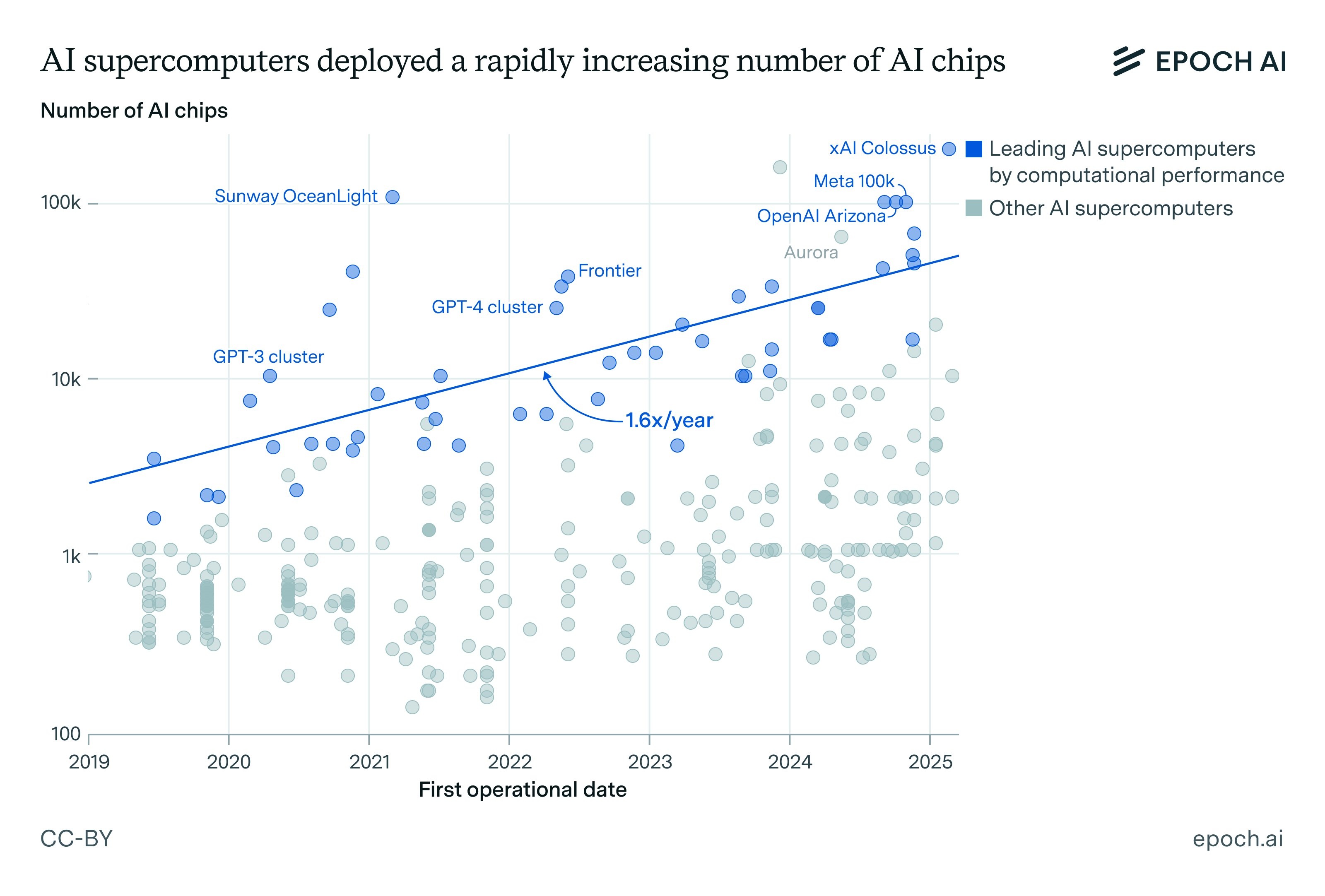 |
Companies like Jensen Huang's Nvidia are busy investing in supercomputers to support future AI. Photo: Nvidia Blog . |
A new study published by Epoch AI – a San Francisco-based research institute – shows that the energy demands of supercomputers are increasing at a dizzying pace, in parallel with the development of artificial intelligence.
According to Epoch AI, if the annual doubling of electricity demand continues through the end of the decade, the world's leading supercomputers in 2030 could require up to 9 gigawatts (GW) – equivalent to the electricity supply for 7-9 million households.
Currently, the world's most powerful supercomputer consumes approximately 300 megawatts (MW), equivalent to the amount of electricity used by 250,000 households. Compared to this figure, the projected future energy consumption is "enormous," according to the research team.
One of the main reasons AI supercomputers will become more power-hungry is due to their ever-increasing scale. Epoch AI estimates that, if the growth trend continues, a top-of-the-line AI supercomputer by 2030 could require up to 2 million AI chips, with construction costs reaching $200 billion .
 |
The number of operations per second (FLOPs/s) of today's leading systems is doubling every 9 months. Source: Epoch AI |
For comparison, the Colossus system – the supercomputer built by Elon Musk's xAI in 214 days – is currently one of the world's largest systems with 200,000 chips and a total investment of approximately $7 billion .
Major technology companies are stepping up the race to build computing infrastructure to support increasingly powerful AI models. Earlier this year, OpenAI announced its Stargate project, worth over $500 billion over the next four years, aimed at developing a critical AI supercomputer.
According to Epoch AI, supercomputers are no longer simply research tools as they once were. They have become "industrial machines"—providing real economic value and serving as key infrastructure for the AI era.
Even politics has gotten involved. Earlier this month, President Donald Trump posted on the social media platform Truth Social, praising Nvidia's $500 billion investment in AI supercomputers in the US. He called it "big and exciting news," emphasizing it as a commitment to a “Golden Age for America.”
Epoch AI 's research is based on data covering approximately 10% of global AI chip production in 2023-2024, along with 15% of major companies' chip inventories as of early 2025. The team of experts asserts that while energy efficiency is improving, the current increase is still insufficient to offset the overall growth rate in electricity demand.
This is also why many tech giants like Microsoft, Google, and data center operators are considering alternatives such as nuclear power to provide stable, long-term energy.
If current trends continue, not only will AI develop more rapidly, but the scale, cost, and energy demands of supercomputing systems will also increase exponentially.
Source: https://znews.vn/chi-phi-khong-lo-cua-ai-post1548789.html




![[Photo] Prime Minister Pham Minh Chinh attends the Conference on the Implementation of Tasks for 2026 of the Industry and Trade Sector](/_next/image?url=https%3A%2F%2Fvphoto.vietnam.vn%2Fthumb%2F1200x675%2Fvietnam%2Fresource%2FIMAGE%2F2025%2F12%2F19%2F1766159500458_ndo_br_shared31-jpg.webp&w=3840&q=75)



































































































Comment (0)